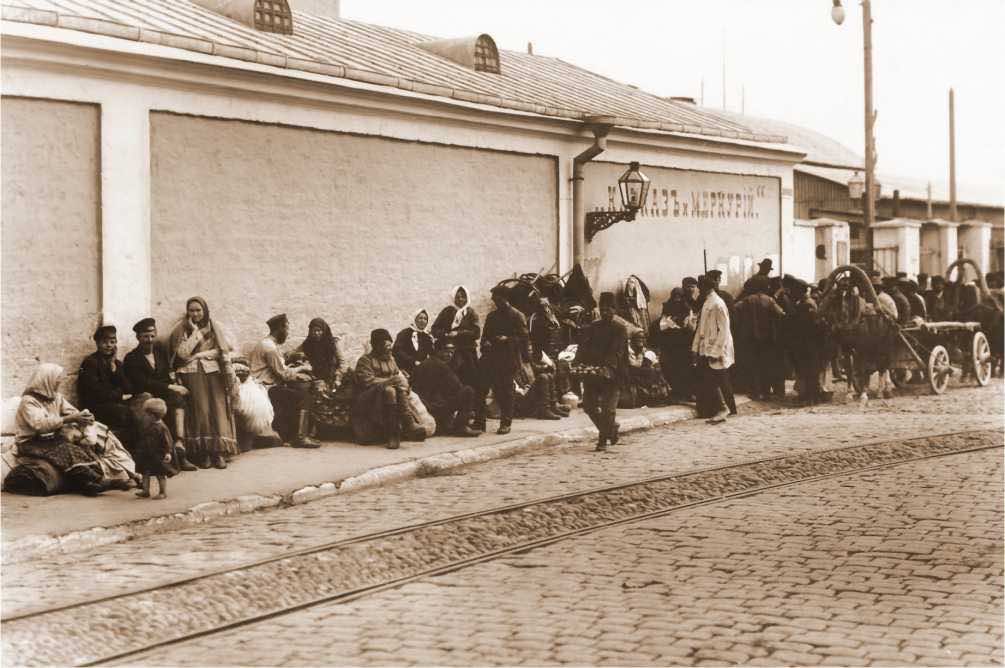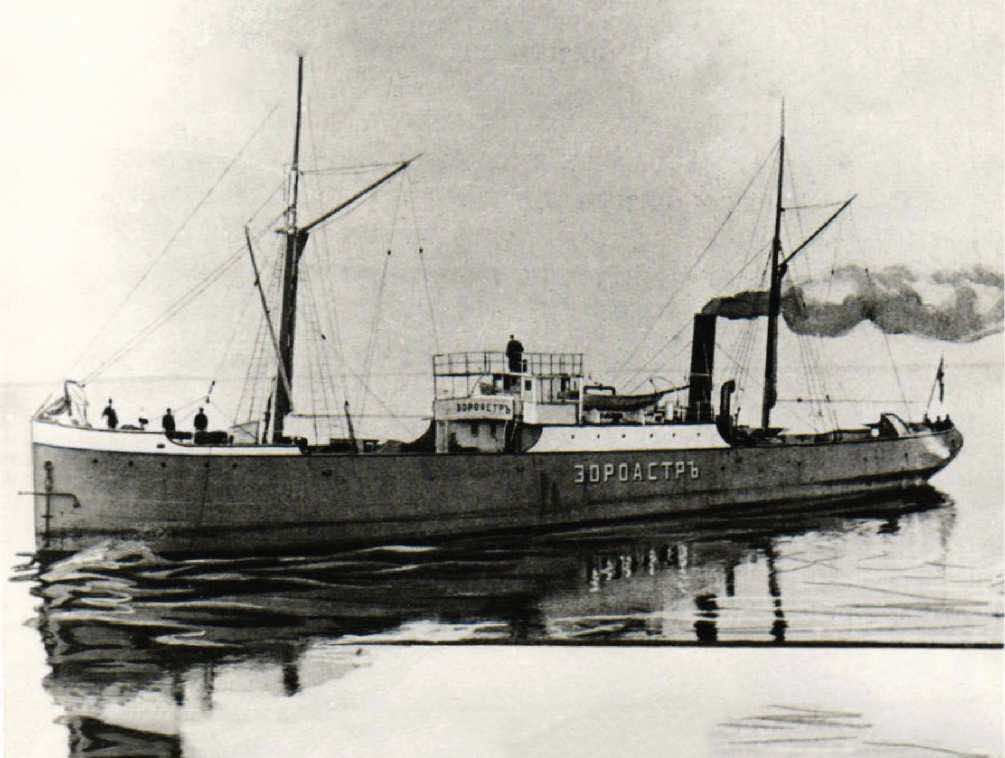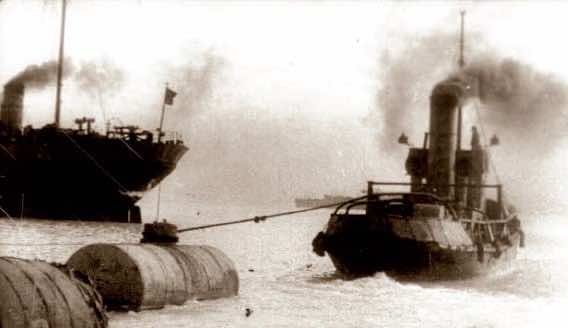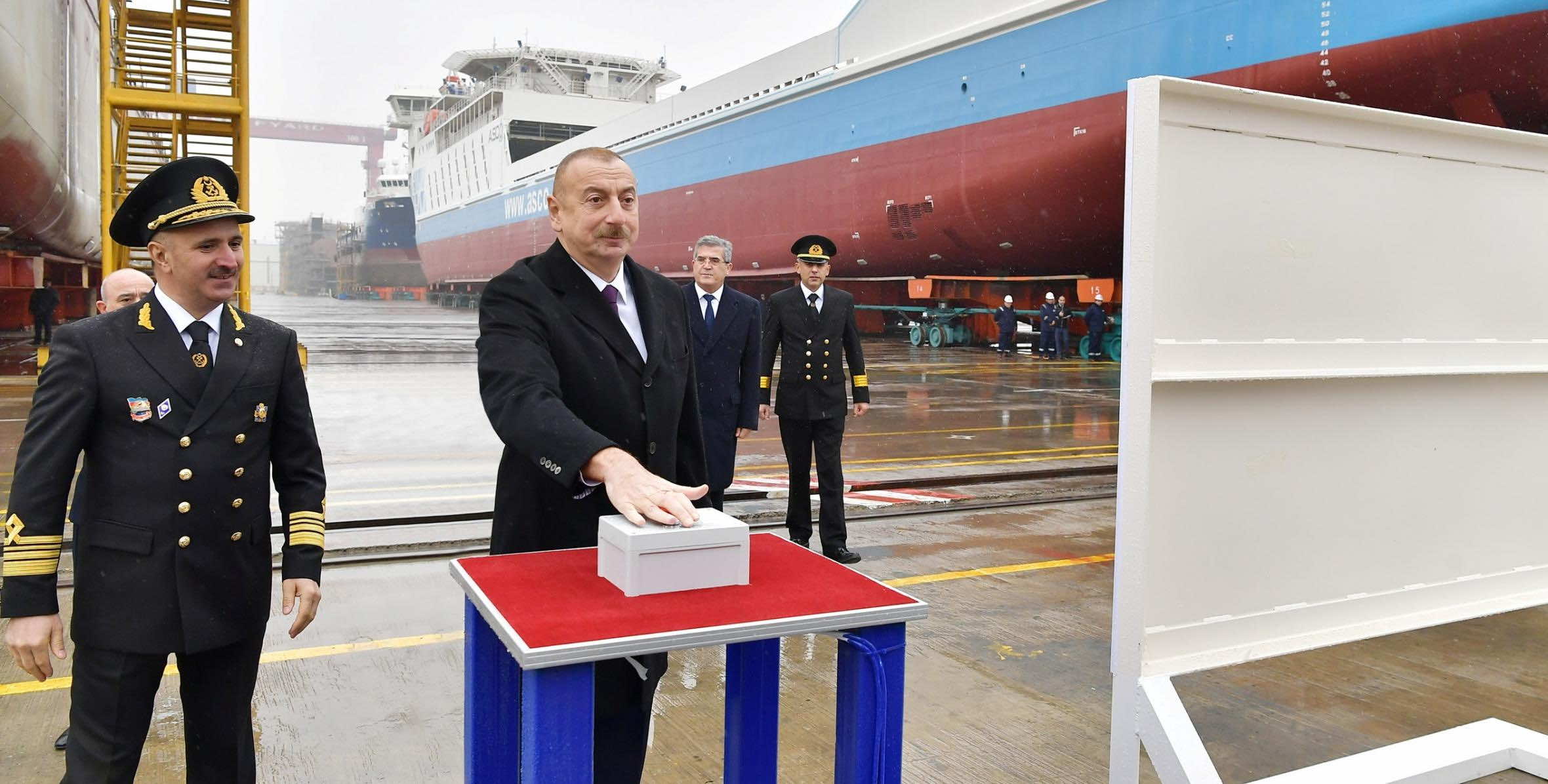Day of the Seafarer in the Republic of Azerbaijan
 The professional holiday " Day of the Seafarer" was established by the Decree of the President of the Republic of Azerbaijan dated June 19, 2014. It was decreed to celebrate the professional holiday "Day of the Seafarer" on June 25 every year in the Republic of Azerbaijan. This is the head of state’s high estimate for all Azerbaijani sailors’ hard but honorable work.
The professional holiday " Day of the Seafarer" was established by the Decree of the President of the Republic of Azerbaijan dated June 19, 2014. It was decreed to celebrate the professional holiday "Day of the Seafarer" on June 25 every year in the Republic of Azerbaijan. This is the head of state’s high estimate for all Azerbaijani sailors’ hard but honorable work.
In the 19th century, the rapid growth of oil production in Baku gave a huge impetus to develop shipping in the Caspian Sea. At that time, new floating vehicles were required to transport oil and oil products. It is no coincidence that the world's first oil-carrying barge "Alexander" was operated in the Caspian Sea in 1873. The first tanker in the world "Zarodusht" (built in 1878) was voyaging on the Caspian Sea. Caspian sailors were also destined to sail on the first internal combustion engine ship "Vandal" (1903) and the first reversible two-engine ship "Delo" (1908). The foundation of Caspian Sea Shipping was laid on May 21, 1858, with the establishment of the "Caucasus and Mercury" Joint-Stock Company.
 As the volume of maritime transport grew, the number of ports on the shores of the Caspian Sea was also rising. New bridges, warehouses, and cranes were built. The expansion of the fleet made it necessary to establish a ship repair facility. In 1866, the Mechanical Plant of the “Caucasus and Mercury” Joint-Stock Company was founded in Baku. Baku maritime classes were organized in 1881 to meet the staffing requirements of the growing fleet. In subsequent years, the company’s fleet was upgraded with new-type vessels built in the country and abroad. The Caspian sailors were provided with river-sea tankers and cargo ships.
As the volume of maritime transport grew, the number of ports on the shores of the Caspian Sea was also rising. New bridges, warehouses, and cranes were built. The expansion of the fleet made it necessary to establish a ship repair facility. In 1866, the Mechanical Plant of the “Caucasus and Mercury” Joint-Stock Company was founded in Baku. Baku maritime classes were organized in 1881 to meet the staffing requirements of the growing fleet. In subsequent years, the company’s fleet was upgraded with new-type vessels built in the country and abroad. The Caspian sailors were provided with river-sea tankers and cargo ships.
A shipping company "Caucasus and Mercury" started operating in the Caspian Sea. The company successfully continued its operations until the 20s of the last century and contributed to developing the water transport and shipping industry.
In turbulent 1918, the socio-political situation in Baku became tense. As in all areas, serious problems arose in the operation of shipping companies, including "Caucasus and Mercury". Power in the city changed hands and stability was disturbed. In November 1918, British military forces entered Baku under the leadership of General Thomson and took control of the shipping companies in the Caspian Sea. However, in August 1919, the British troops had to leave Baku, and the organization of the operation of shipping companies on the Caspian Sea fell on the government of the Azerbaijan Democratic Republic. Despite certain difficulties, the ADR started the organization of the military and naval forces in late 1919. In September 1918, during the liberation of Baku from the Central-Caspian Dictatorship and British interventionists, the main warships there "Kars", "Ardahan" and "Astrabad" were taken to Port Petrovsk. Although the British military forces that occupied Baku in November 1918 returned those ships, they did not hand them over to the Government of the Azerbaijan Democratic Republic but kept them under their control. In early September 1919, the "Kars", "Ardahan", and "Astrabad" ships came under the control of the Government of Azerbaijan. On October 1, 1919, the crew of the Astrabad warship was approved. Azerbaijani specialist Kitabchizade was appointed as the ship's captain. Captain Hasan Chilingarzadeh was appointed captain of the Ardahan ship. On December 5, a special commission was set up to improve the condition of the crews of "Kars" and "Ardahan" ships. In early1920, the naval forces included 8 warships "Kars" and "Ardahan" with 75-mm and 100-mm cannons, auxiliary ships "Astrabad", "Goytepe", "Araz", "Nargin", transport ship "Orion", the armed steamer "Pushkin" and several boats. In 1920, it was planned to purchase from overseas six motor boats with a speed of at least 23 nautical miles per hour, twelve 47-mm or 57-mm-cannon boats with 2 minelayers, and a two-cannon cutter with a speed of 26-36 nautical miles per hour designed for anti-submarine warfare. To prevent attacks by enemy ships from the sea, it was contemplated to acquire a minelayer ship, 6 submarines of not a very big size, and 92 cannons of various calibers to increase the combat capabilities of existing warships. However, from the beginning of 1920, the worsening military situation and the April invasion (1920) interrupted the strengthening of military and naval forces.
With the set up of Soviet authority in Azerbaijan on April 28, 1920, shipping, like all other fields, was brought under the rule of Bolshevik laws. On June 6, 1920, the Provisional Revolutionary Committee issued a decree signed by N. Narimanov to nationalize the Caspian fleet and the coastal economy. At that period, 471 ships with a cargo capacity of 260 thousand tons were in the Caspian Sea. Only vessels of a carrying capacity of more than 500 pounds and Turkmen ships were nationalized. At the end of 1920, 11 thousand people were employed in the Caspian Sea fleet. 7,965 hands worked on the fleet’s ships, in ship repair shops and ports. Until 1923, continuous structural changes were made to regulate water transport in Soviet Azerbaijan. Finally, in October of the same year, an order was issued renaming the Joint-Stock Company “Caspian Shipping” as “KASPAR” for short. After this, new ships were launched into the Caspian Sea, especially starting in 1928, large tankers and dry cargo ships were purchased. Thus, in 1928-1932, tankers with a carrying capacity of up to 9500 tons were assigned to the Caspian Fleet. During these years, maritime transport especially intensified, the number of dry cargo ships grew from 32 to 42, and oil tankers from 51 to 62.
 Baku oilmen and Caspian sailors worked selflessly during World War II (1941-1945) and completed all tasks on time. Generally, the Caspian sailors’ commitment during World War II can be called a heroic page in the history of shipping in Azerbaijan.
Baku oilmen and Caspian sailors worked selflessly during World War II (1941-1945) and completed all tasks on time. Generally, the Caspian sailors’ commitment during World War II can be called a heroic page in the history of shipping in Azerbaijan.
The post-war period is characterized by the renewal of the Caspian fleet with new ships.
In 1953, a crucial event happened. Khazardonanma (Caspian Fleet) and Khazartanker (Caspian Tanker) shipping companies were merged to establish a single Caspian Shipping Company. In 1961, the Astrakhan shipping company Reidtanker was incorporated into it. The Caspian unified shipping allowed practical guidance to be brought closer to the fleet, and the fleet to be used more efficiently leading to the crew’s better operating results. In 1969, after Heydar Aliyev was elected first secretary of the Central Committee of the Communist Party of Azerbaijan, cargo transportation in the Caspian Sea saw an overwhelming revival with his action. In 1970, Caspian sailors transported 25 million tons of oil and oil products and 70 million tons of dry cargo, setting a record in the shipping history. This gave rise to speaking out and demanding the purchase of new ships. At the insistence of the Azerbaijani leader, orders were placed for new tankers and dry cargo ships to be built at shipyards in Bulgaria, Volgagrad, Romania, and other countries. Eight ferry crafts were delivered from Yugoslavia to the Caspian Sea in the mid-eighties. Generally, the transport units purchased during the years when Heydar Aliyev led our republic during the Soviet period are the mainstay of our fleet.
In 1969, after Heydar Aliyev was elected first secretary of the Central Committee of the Communist Party of Azerbaijan, cargo transportation in the Caspian Sea saw an overwhelming revival with his action. In 1970, Caspian sailors transported 25 million tons of oil and oil products and 70 million tons of dry cargo, setting a record in the shipping history. This gave rise to speaking out and demanding the purchase of new ships. At the insistence of the Azerbaijani leader, orders were placed for new tankers and dry cargo ships to be built at shipyards in Bulgaria, Volgagrad, Romania, and other countries. Eight ferry crafts were delivered from Yugoslavia to the Caspian Sea in the mid-eighties. Generally, the transport units purchased during the years when Heydar Aliyev led our republic during the Soviet period are the mainstay of our fleet.
In the summer of 1993, following the return of Heydar Aliyev to power at the insistence of the people, stability was restored in the country and the first steps were taken to develop the economy. Heydar Aliyev considering the republic's favorable location where international transport and communication lines intersect defined the reconstruction and modernization of this area in Azerbaijan as one of the top priorities of the economic development strategy. He managed to bring the Caspian Shipping Company out of the crisis and develop it.
The socio-economic development strategy founded by the national leader Heydar Aliyev and currently being successfully continued under the leadership of President Ilham Aliyev also covers shipping, which is one of the key areas of the country's transport sector.
Based on the instructions of President Ilham Aliyev, the formation of transport corridors passing through the territory of Azerbaijan, ensuring their safety, the creation of a competitive and flexible cargo transportation system, the operation of seaports, the Shipbuilding Plant and ship repair enterprises have been further improved. Recently, serious reforms have been implemented in shipping as in other fields. A clear example of this is the establishment of the “Azerbaijan Caspian Shipping” Closed Joint-Stock Company based on the merger and reorganization of the Azerbaijan State Caspian Sea Shipping Company and the Caspian Sea Oil Fleet of the State Oil Company of Azerbaijan Republic with the Decree No. 6 of the President of the Republic of Azerbaijan dated October 22, 2013. This Company was established to contribute to domestic and international transportation in the maritime industry by more efficiently using the competitive potential of the country in the field of transit cargo transportation.
Recently, serious reforms have been implemented in shipping as in other fields. A clear example of this is the establishment of the “Azerbaijan Caspian Shipping” Closed Joint-Stock Company based on the merger and reorganization of the Azerbaijan State Caspian Sea Shipping Company and the Caspian Sea Oil Fleet of the State Oil Company of Azerbaijan Republic with the Decree No. 6 of the President of the Republic of Azerbaijan dated October 22, 2013. This Company was established to contribute to domestic and international transportation in the maritime industry by more efficiently using the competitive potential of the country in the field of transit cargo transportation.
The “Azerbaijan Caspian Shipping” CJSC comprises merchant and offshore support fleets and shipyards. The merchant fleet contains 54 vessels including 20 tankers, 13 ferries, 15 universal dry cargo ships, 2 Ro-Ro ships, 2 Ro-Pax ships, 1 technical ship, and 1 floating workshop. The offshore support fleet contains 204 vessels including 22 crane vessels, 18 supply and tug vessels, 25 passenger ships, 2 pipelay barges, 6 firefighting vessels, 5 geological survey vessels, 10 diving support vessels, and 116 other support vessels.
At the international level, new opportunities have emerged for the Middle Corridor (Trans-Caspian International Transport Route), which crosses the Caspian Sea and of which Azerbaijan is an important part. Several benefits of this route can be listed. Single tariff, “one window” principle is applied throughout the route. Such factors, including ensuring security in the countries through which the corridor passes, draw the attention of European and Asian countries and transport companies to the Middle Corridor. Experts highly value the importance of the Middle Corridor for the European and Asian regions. It is reported that if a freight train from China to Europe chooses the Middle Corridor, it will travel not 10,000, but 7,000 kilometers in 12 days. This demonstrates how advantageous and secure the corridor is in global trade between Asia and Europe. In the future, the functionality of the Trans-Caspian route will multiply through the integration of the Middle Corridor with the Zangezur Corridor.
Today, in the economy of Azerbaijan, maritime transport is essential to state border protection, passenger transportation, offshore oil and gas production, and cargo transportation for import and export operations.
Recommended literature:
- Yadigarov, Təbriz Abdulla oğlu. Azərbaycan iqtisadiyyatında dəniz nəqliyyatı: problemlər və perspektivlər : monoqrafiya / T. A. Yadigarov ; elmi red. F. Ə. Qənbərov ; AMEA İqtisadiyyat İnstitutu. - Bakı : Avropa nəşriyyatı, 2018. - 340 s.
- Bağırov, Etibar Əziz oğlu. Dəniz nəqliyyatının iqtisadiyyatı : dərs vəsaiti = Экономика морского транспорта : учебное пособие / E. Ə. Bağırov ; Azərbaycan Xəzər Dəniz Gəmiçiliyi Qapalı Səhmdar Cəmiyyəti, Azərbaycan Dövlət Dəniz Akademiyası. - Bakı : ADDA, 2023. - 254 s.
- Əliyev, Nurulla Arif oğlu. 1918-1920-ci illərdə Azərbaycan hökumətinin fəaliyyətində hərbi-dəniz aspektləri / N. A. Əliyev; elmi red. Q. Hacıyev; Azərbaycan Respublikası Silahlı Qüvvələrinin Hərbi Akademiyası.- Bakı: Afpoliqraf, 2018.- 80 s.
- Həsənov, Müsəllim. Azərbaycanda gəmiçilik : sənədli tarix: Azərbaycan Xəzər Dəniz Gəmiçiliyinin 160 illiyinə həsr edilir : [1858-2018] /M. Həsənov ; [red. E. Əliyev]. - Bakı: [n. y.], 2018. - 176 s.
- Azərbaycan Xəzər Dəniz Gəmiçiliyi -160 il/[layihənin müəl. S. Abdullayeva ; red. R. Tahirov ; mətnin ing. dilinə tərc. R. Hüseynov ; dizayner : H. Rza-zadə, N. Məmmədzadə ; Azərmarka MMC]. - Bakı: [n. y.], 2018. - 141 s.